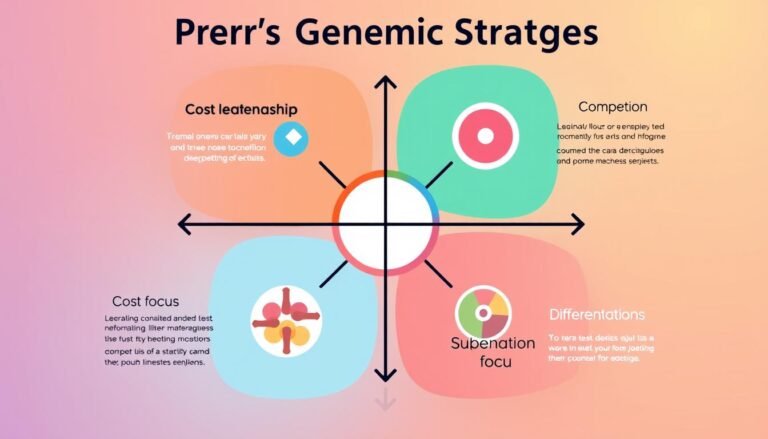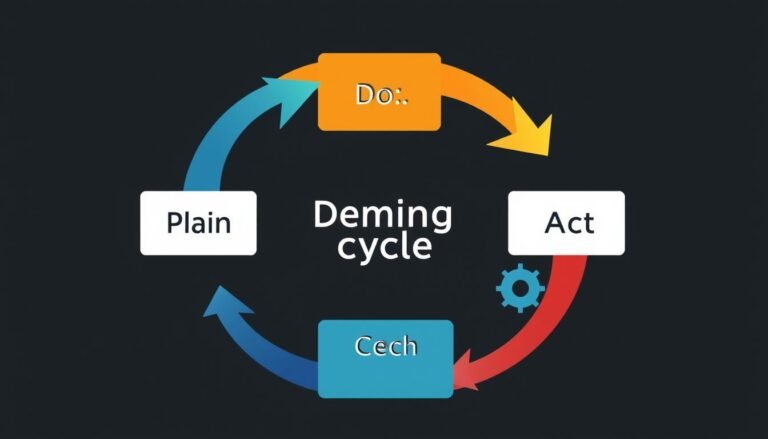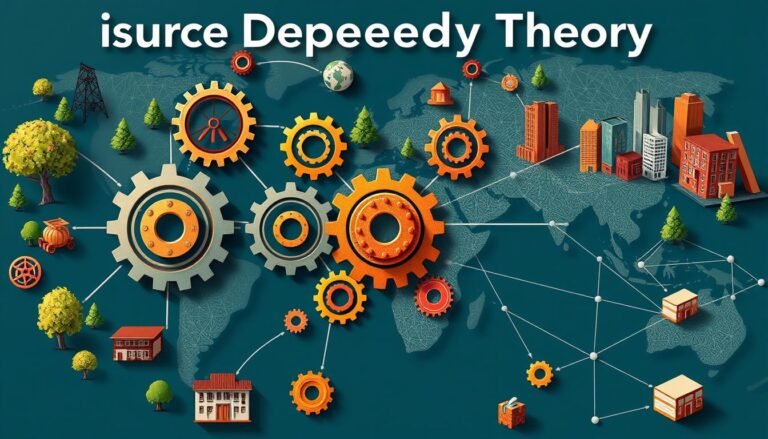Understanding Theory of Constraints (TOC) – Key Insights
Have you ever wondered why some companies do well while others don’t, even when they face the same challenges? It’s often because they know how to handle their constraints well. Eliyahu M. Goldratt introduced the Theory of Constraints (TOC) in his book “The Goal.” This method helps find and manage the bottlenecks that slow down production and cut profits. By focusing on the main limits in a process, TOC helps companies get better, leading to more profits, quicker delivery times, and less stock.
This article will cover the main parts of TOC, looking at its ideas and how to use them in your business. You’ll learn how to spot constraints, use effective strategies, and keep improving your processes.
Key Takeaways
- The Theory of Constraints aims to boost profits by focusing on key bottlenecks.
- Eliyahu M. Goldratt introduced TOC in “The Goal,” offering a clear way to improve processes.
- The Five Focusing Steps help companies find and fix constraints.
- Throughput Accounting is key to TOC, helping make better management choices.
- Using TOC well can greatly improve capacity and cut down on delays.
What is the Theory of Constraints?
The Theory of Constraints (TOC) is a way to make organizations better by focusing on the main thing that limits them. This key limitation is called a bottleneck. Eliyahu M. Goldratt and Jeff Cox introduced it in their book The Goal in 1984. TOC says every organization has a constraint that stops it from making the most profit.
This constraint can be something physical or a rule. It greatly affects how much the organization can do and its overall performance.
Knowing about the Critical Chain is key in TOC. It’s about managing projects well, keeping an eye on resources, and dealing with time limits. TOC helps find these constraints. This lets organizations make plans to work better and increase their productivity.
By fixing bottlenecks, companies can use their resources better. This makes processes more efficient and boosts profits.
TOC has a five-step plan to handle constraints: find the main constraint, use it well, make everything else support it, increase the constraint, and start over. This cycle helps organizations keep improving and stay flexible to new challenges.
Key Principles of TOC
Dr. Eliyahu Goldratt introduced the Theory of Constraints (TOC) in the 1980s through his book “The Goal.” It’s all about recognizing that every system has limits. Knowing these limits is key for Continuous Improvement. The core ideas of TOC focus on convergence, consistency, and respect. They show that a system’s best performance comes from its weakest link.
TOC teaches us to find and manage the bottlenecks in any process. It’s similar to Lean Manufacturing, aiming to cut waste and boost efficiency. TOC suggests five steps to focus on:
- Identify the constraint within the system.
- Exploit the constraint by making the most of its current capacity.
- Subordinate all other processes to align with the work of the constraint.
- Elevate the performance of the constraint to boost throughput.
- Prevent inertia from producing a new constraint by continually assessing and adapting processes.
This method helps organizations focus on increasing throughput, not just cutting costs. It’s all about boosting profitability and efficiency.
TOC is flexible and works in many areas, like manufacturing, supply chains, services, and project management. It always targets the constraint to improve efficiency and effectiveness in Constraints Management.
| Core Principles | Description |
|---|---|
| Convergence | A unified approach to streamline improvement efforts towards the system’s constraints. |
| Consistency | Maintaining a steady focus on processes to ensure alignment and harmony across operations. |
| Respect | Valuing individuals within the system and fostering an environment that encourages contributions towards improvement. |
The Role of Constraints in Process Improvement
Understanding the role of constraints is key to making processes better in organizations. By finding out what limits a system, companies can get better and make more money. Things like limited machines or old rules can slow things down. Knowing these issues helps companies work on their weak spots to improve.
Identifying System Constraints
Looking closely at how things work helps find where they’re not doing well. This helps spot the main problems that slow things down. Companies that check for bottlenecks get deep insights into how they work. This lets them focus on what will make the biggest difference, leading to better processes.
Types of Constraints: Physical vs. Policy
Constraints can be physical or policy-based. Physical ones are about what equipment can do or how things flow. These might need new machines or more space to work better. Policy constraints come from rules or old ways that slow down change and quick action. Knowing the difference helps companies plan better to fix these issues.
| Type of Constraint | Description | Impact on Process Improvement |
|---|---|---|
| Physical Constraints | Limitations due to machinery, space, or resources. | Can lead to slow production rates and increased lead times. |
| Policy Constraints | Outdated rules, procedures, or governance structures. | May cause bottlenecks and inhibit agility within the organization. |
Implementing the Five Focusing Steps
Learning the Five Focusing Steps is key for companies wanting to get better and make more money. This method helps find and fix problems in a system. Each step builds on the last, making a cycle of betterment that keeps improving different processes.
Step 1: Identify the Constraint
The first step is to find the main thing that slows down everything. For example, a software team might get held up by slow code reviews and deployments. Finding out where things slow down is the first step to fixing it.
Step 2: Exploit the Constraint
After finding the bottleneck, the next step is to use it well. In the case of the software team, they used to wait a long time to deploy code. By making deployments faster, from 30 minutes to 8 minutes, they used their bottleneck better.
Step 3: Subordinate Other Processes
Getting other workflows to support the main bottleneck is key. The team made sure developers had tasks ready and reviewers were prepared. This kept things moving smoothly and avoided new delays.
Step 4: Elevate the Constraint
If the bottleneck is still holding things back, it’s time to make it stronger. This might mean getting more resources or changing how things work. Making smart investments helps keep up with the needs of the operation.
Step 5: Repeat the Process
The last step is to keep going in a cycle. Once you fix one bottleneck, another will show up. This cycle of improvement keeps companies ready and flexible for new challenges.
| Step | Description | Impact on Continuous Improvement |
|---|---|---|
| Step 1 | Identify the Constraint | Establishes clear focus on limiting factors. |
| Step 2 | Exploit the Constraint | Maximizes current resources with minimal changes. |
| Step 3 | Subordinate Other Processes | Ensures all processes align to support the constraint. |
| Step 4 | Elevate the Constraint | Invests in resources to remove lasting limits. |
| Step 5 | Repeat the Process | Encourages ongoing identification of new constraints. |
Throughput Accounting and Its Importance
Throughput Accounting is key in the Theory of Constraints (TOC). It offers a new way to make financial decisions. It aims to boost throughput, which is how fast a system makes money from sales. Unlike old cost accounting, it looks at how revenues and totally variable costs (TVCs) are linked. This helps in managing costs and inventory better.
Understanding Throughput, Inventory, and Operating Expense
Throughput Accounting focuses on throughput, inventories, and operating expenses. Throughput is what a business makes from sales minus direct material costs. It shows how well a business is doing. Inventories are money stuck in the system that affects throughput. Operating expenses are the daily costs of running a business.
This approach helps all businesses, big or small, see their finances clearly. It makes them more profitable.
Key Metrics for TOC Success
Throughput Accounting uses key metrics to check how well a business is doing. These include throughput dollar days, inventory dollar days, and operating expenses. Knowing how product prices and mixes affect these metrics can improve profits.
This method makes companies focus on making flow and increasing net profit, not just cutting costs. It helps managers make quick decisions and solve key business problems. This approach, from Dr. Eliyahu Goldratt’s book “The Goal,” helps in planning, scheduling, and managing inventory in many industries.
The Thinking Processes in TOC
The Theory of Constraints (TOC) offers key frameworks to analyze and boost workflow. It includes tools like the Current Reality Tree, Future Reality Tree, and Evaporating Cloud. These tools help align strategies and practices towards goals.
Current Reality Tree
The Current Reality Tree (CRT) helps find the root causes of problems. It’s a detailed analysis that can fill 11 pages with boxes and arrows. By focusing on a few main issues, organizations can make big improvements.
This tool helps understand the current situation for effective change.
Future Reality Tree
The Future Reality Tree (FRT) shows what changes will bring. It outlines expected results, helping to see the benefits of new plans. This helps stakeholders understand the future and plan for it.
Evaporating Cloud Tree
The Evaporating Cloud helps solve conflicts that lead to problems. It finds conflicting goals and suggests actions to bridge them. This approach brings people together and improves problem-solving in TOC.
| Tool | Description | Purpose |
|---|---|---|
| Current Reality Tree (CRT) | Maps out cause-effect relationships to identify root causes of UDEs. | Understanding current constraints to enable targeted improvements. |
| Future Reality Tree (FRT) | Visualizes future outcomes based on implemented changes. | Aids in strategic planning and forecasting positive results. |
| Evaporating Cloud | Addresses conflicting objectives related to UDEs. | Creates alignment among stakeholders for innovative solutions. |
Comparing TOC with Lean Manufacturing
The Theory of Constraints (TOC) and Lean Manufacturing offer different yet complementary ways to boost efficiency and profits in companies. They both aim to add value and cut waste. Knowing their similarities and differences helps in finding the best Process Optimization strategies for businesses.
Similarities and Differences
Both TOC and Lean focus on making things better, but they change things in different ways. Here are the main differences:
- Focus Area: TOC looks for and manages the main constraint in a system. Lean aims at reducing Waste in all value streams.
- Measurement Metrics: TOC uses Throughput, Inventory, and Operating Expense. Lean looks at Cost, Lead Time, and Value-Added Percentage.
- Implementation Steps: TOC’s “Five Steps” include identifying and managing constraints. Lean’s steps are specifying customer value, identifying value streams, achieving flow, and striving for perfection.
Integration of TOC and Lean Principles
Using TOC and Lean together can greatly improve processes. TOC helps find and fix immediate issues in Lean setups, leading to faster improvements. This mix makes production processes more aligned, making them more agile and quick to respond.
Both methods can bring quick benefits, but keeping them up takes ongoing effort over five years. Using both methods together can help overcome weaknesses and boost productivity.
The Impact of TOC on Supply Chain Optimization
The Theory of Constraints (TOC) offers a strategic way to make supply chains better. It focuses on making production more efficient by finding and fixing bottlenecks. This method aims to reduce lead times and improve how inventory is managed.
Enhancing Production Efficiency
TOC is great for boosting production efficiency. It looks at the whole supply chain, from suppliers to partners, to find what slows things down. With TOC, companies can:
- Find and use bottlenecks to increase output.
- Make better use of resources for more productivity.
- Keep improving by getting rid of waste.
Minimizing Lead Times and Inventory
TOC helps cut down lead times, which is key to staying competitive. By focusing on the most limiting steps in the supply chain, companies can make their processes faster. Good inventory management is also crucial, as TOC helps in:
- Lowering too much stock without making products hard to find.
- Making the supply chain more responsive to what customers want.
- Saving a lot of money by turning inventory over faster.
The Future of Theory of Constraints (TOC)
The Theory of Constraints (TOC) is evolving, changing how we make things and provide services. As we move towards digital and automation, TOC helps make things run better. This part talks about how TOC fits into today’s world and looks at new trends like advanced data analytics for better management.
TOC in Modern Manufacturing and Services
In today’s manufacturing, TOC is key for improving processes. It helps companies keep getting better through five main steps. By using TOC, companies can make more and spend less, leading to more profit. Big names like General Electric, Ford, Motorola, and Nestle use TOC, showing its wide application.
Trends and Innovations in Constraints Management
Future trends in managing constraints focus on artificial intelligence and data analytics. AI helps spot problems and predict trends, helping TOC’s goal of making the most of what we have. New ways of managing processes also help companies adapt to market changes. Tools like the Drum-Buffer-Rope method show how to keep work flowing smoothly while staying flexible.
As TOC guides how we work, companies aim to keep less inventory for better cash flow. Combining this with lean manufacturing makes things more efficient. This path to better management builds a culture of flexibility, key for success in today’s complex business world.
| Aspect | TOC Approach | Impact on Modern Manufacturing |
|---|---|---|
| Focus Area | Identifying and managing constraints | Increased throughput and profitability |
| Technology Integration | Utilizing AI for decision support | Enhanced forecasting and responsiveness |
| Inventory Management | Minimizing inventory levels | Improved cash flow and financial health |
| Process Innovation | Implementing the Drum-Buffer-Rope | Smoother workflow and operational efficiency |
| Collaboration | Integration with Lean practices | Holistic optimization of processes |
Conclusion
The Theory of Constraints (TOC) is a big change in how we improve processes. It started in the 1980s by Dr. Eliyahu Goldratt. It looks at what stops a company from doing well and focuses on fixing those things.
TOC helps make clear what a company wants and guides decisions with its Five Focusing Steps. It’s all about making things better by managing key areas like Throughput, inventory, and costs.
Using TOC, companies can get better at solving problems and keep improving. It gives them tools like Throughput Accounting and the Thinking Processes. These help businesses do well financially and avoid waste.
TOC is a strong way for companies in many fields to do well in today’s fast-changing world. It helps them focus on what’s important. This leads to better performance and success over time, making TOC a key strategy for companies.
Source Links
- Theory of Constraints (TOC) | Lean Production
- Understanding the Theory of Constraints | Wrike
- What is the Theory of Constraints, and How Does it Compare to Lean Thinking? – Lean Enterprise Institute
- Theory of constraints, ToC & constraints management – Marris Consulting
- Theory of Constraints: Steps & Application | SafetyCulture
- Understanding Theory of Constraints: How it Helps in Lean Management
- Theory of Constraints – The Strategic CFO®
- Theory of constraints
- Theory of Constraints of Eliyahu M. Goldratt
- What is the Theory of Constraints? A Comprehensive Guide – SixSigma.us
- Theory of Constraints (TOC): Principles & Application
- The Five Focusing Steps: A Powerful Way to Reach Your Goals
- Five Focusing Steps, a Process of On-Going Improvement
- Throughput Accounting
- Theory of Constraints – Throughput Accounting. A Complete Guide – SixSigma.us
- TOC Thinking Processes
- Thinking processes (theory of constraints)
- Theory of constraints, six sigma and lean: are they playing in the same league?
- Theory of Constraints (TOC): Introduction
- Tuning Supply Chains with Theory of Constraints
- Unleashing Potential Comprehensive Guide Theory of Constraints
- What Is Theory Of Constraints (TOC)
- Revealing the potential value of combining the Theory of Constraints (TOC) with Artificial Intelligence (AI)
- Understanding and applying the theory of constraints
- Theory of Constraints (TOC): All You Need to Know – SM Insight
- Theory of Constraints (TOC): History and Evolution – A-dato







